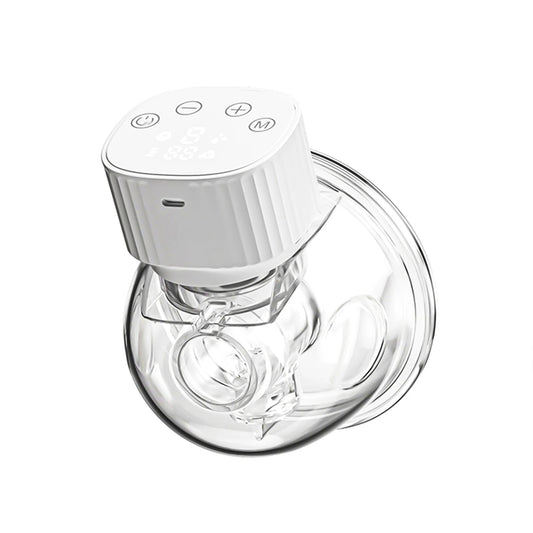-
BabyHeart HiFlow Wearable Electric Breast Pump - FDA Cleared
Regular price From $99.00Regular priceUnit price per$149.00Sale price From $99.00 Sold out
Sold out -
Rechargeable Baby Bottle Brush
Regular price $39.00Regular priceUnit price per$0.00Sale price $39.00
Portable electric breast pump
Breast pumps have evolved from simple manual tools into compact, portable electric designs that fit busy routines. The purpose stays the same: express comfortably, efficiently and hygienically. If you are often on the move, a portable electric pump from our breast pump collection can keep sessions flexible at home, work or on the go.
How many times can I use my electric breast pump in a day?
Frequency depends on your baby’s feeding pattern, your supply and your comfort. Many exclusively pumping parents aim for roughly 8 to 10 sessions across 24 hours in the early weeks to help establish supply. Your ideal rhythm may differ, especially with multiples or specific medical guidance. A lactation consultant or healthcare professional can tailor a plan to you.
If you pump frequently, choose a reliable unit with easy cleaning and readily available spares. If you need mobility, a portable electric or wearable pump helps you express without being tethered to a wall socket.
How many minutes should I pump per session?
As a guide, many parents find 15 to 20 minutes works for double pumping. With a single pump, allow similar time per side. Adjust based on comfort and milk flow. If long continuous suction bothers you, consider shorter sessions more often. Early days can take longer while you learn your settings and flange fit.
How do I know when to stop a session?
- End 2 to 3 minutes after milk flow slows to drops or when your breasts feel comfortable.
- Stop if you feel pain. Recheck flange size, alignment and suction level, and replace worn valves or membranes.
- If discomfort persists, speak with a healthcare professional.
Feeding milestones and pumping
Many babies start solids around 6 months, depending on readiness and professional advice. As solids increase, you may pump less often and your body will adjust. If you feel you are weaning too quickly or have discomfort, seek guidance from a clinician or lactation consultant.
Build your portable pumping kit
Pair your pump with accessories and spares such as valves, membranes, flanges and extra bottles, plus storage bags and baby essentials to make transfers and labelling easier.
Shop online with fast dispatch Australia wide. See our Shipping Policy, Returns and flexible payments via Klarna and Zip. Need help choosing or sizing? Contact our team via the Contact page.
Important information
The information on this page and our products is for general wellness and convenience. It is not a substitute for professional medical advice, diagnosis or treatment. Always consult a qualified healthcare professional with any concerns about your health or your baby's health.

